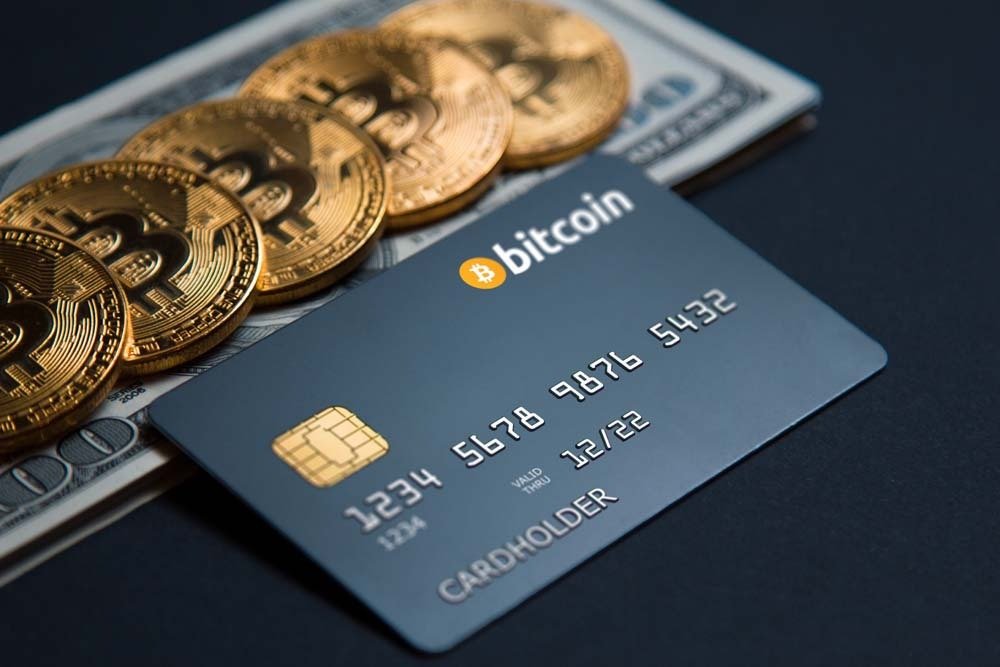Stepping into the arena of crypto margin trading strategies for beginners can seem like facing a giant without a shield. But worry not! You’re about to equip yourself with five fierce tactics that will turn the tides in your favor. Get ready to grasp the ropes of leveraging digital coins, handle your risks like a pro, and spot prime trading times. I’ll guide you through setting your sails steady on the volatile crypto seas, ensuring you’re prepped and ready for the journey ahead. Let’s dive into the art of crypto margin trading and turn you into a savvy newcomer ready to triumph.
Grasping the Basics of Crypto Margin Trading
Understanding Margin in Cryptocurrency
Margin trading is like a power boost for your crypto buy. It lets you trade more than you own. Think of it as a loan from an exchange. This loan helps you buy more coins. The money you put down first is called the initial margin. You must keep some coins as a safety net. This is the maintenance margin. It protects you and the exchange if prices drop.
With these margins in place, you can bet on whether a coin’s price will rise or fall. If you guess right, you win big! But if the price moves against you, your losses can also be big. So the exchange might give you a margin call. This is when you need to add more coins or cash to your safety net.
Now listen well, new traders! Risk management is key. We’ll talk more about that in the next section. Remember to take things slow. Margin trading can be a tough ride.
Leverage Trading Explained
Leverage lets you punch above your weight in the trading ring. It multiplies your buying power. With crypto, exchanges can offer you big leverage. Sometimes up to 100 times what you have! This can turn a small win into a huge one. But, it can also turn a small loss into a big problem.
High leverage dangers are real, my friends. So you need to trade with your head, not over it. Start with low leverage. Learn how it works. Practice with a demo account before you jump into real trading. This way, you won’t risk your coins until you know the game.
When you use leverage, a stop loss is your best friend. It ends the trade if the price drops too much. This can save you from big losses. You should also set a take profit level. This locks in your win before the market shifts again.
Choosing a cryptocurrency exchange is important too. Look for one that fits your needs. They should teach you how to use their platform. And always make sure they follow the rules. Keeping up with KYC and regulation is a must.
So, here are the takeaways: start with understanding margin. Then, tackle leverage. Remember, the bigger the leverage, the bigger the ride. Use tools like stop loss and take profit levels. Make sure you’re using a trusted exchange. And practice is important. Use a demo account until you’re ready for the big leagues.
In the next part of this guide, let’s dive into how you can protect your coins as you venture into the thrilling world of crypto margin trading. It’s all about managing your risks to keep your trades sailing smoothly, even when the waters get choppy.
Crafting Your Risk Management Plan
Initial Margin Requirement Tips
Before you dive into margin trading, you need to know about the initial margin. It’s the amount you must have to open a trade. Think of it like a down payment on a house. Each exchange sets its own rules for this. They require a certain percentage of the trade’s value you must cover.
Knowing this helps you trade responsibly. It stops you from borrowing too much and losing big. Always check the exchange’s requirements. Make sure you have enough funds to meet this first step. If not, you may face a margin call, which is when you must add more money to keep your positions open.
Let’s say you want to trade with $10,000 worth of Bitcoin, but you only have $1,000. With a 10% initial margin requirement, you’re all set. But if the requirement is 20%, you’ll need another $1,000. You should always have a buffer of funds. This way, you can avoid unexpected calls. Start small if you’re new to this to keep your risk low.
Setting Stop Loss and Take Profit Levels
Now, let’s talk about stop loss and take profit levels. These are like your safety net. They can protect you from big losses and lock in your wins.
A stop loss order automatically closes your trade at a certain price to prevent further losses. If the market moves against you, it stops the bleeding. Imagine you buy Bitcoin at $50,000. You might set a stop loss at $48,000. If the price dips to this level, your position sells before it can fall further.
On the flip side, take profit orders do the opposite. They close your trade when the price hits a level where you make a good profit. Say you buy at $50,000, you might set a take profit at $55,000. This way, you won’t miss out on gains if you can’t watch the market.
Both orders help you manage risk. They let you set rules for when to cut losses or take profits. Use them smartly to stop emotional decisions and stick to your plan.
Remember, in margin trading, prices can change fast. Your stop loss and take profit should reflect the market’s volatility. Not too tight, or you’ll exit too soon. Not too wide, or you risk too much.
Lastly, never risk what you cannot afford to lose. Have a clear head, keep learning, and you will get better at this game. Take the time to practice on a demo account. This is key for beginners. It gives you a feel for how all this works before risking real money. Always update your skills and knowledge as markets change fast.
Trading with borrowed money increases profits but also losses. That’s why a solid risk management plan is your best friend in crypto margin trading. It helps you stay in the game longer and grow your skills. Follow these simple yet crucial tips and you’ll set yourself up for success.
Selecting the Right Crypto Exchange and Leverage
Evaluating Exchange Provided Leverage Ratios
When you start, picking a crypto exchange feels tough. But it’s key to winning. Each exchange offers different leverage for trading. What’s leverage? It’s using borrowed money to trade more than you have. It can boost wins but also losses. So, handle with care. For beginners, start small. A 3:1 ratio is a good start. It means for every dollar you have, you trade three. As you learn, you can try more.
Look at the exchange’s rules too. They tell you their initial and maintenance margin. What are these? The initial margin is what you first pay to open a trade. The maintenance margin is what you need to keep your trade open. If it falls below this, you get a margin call. This means you must add more money or close the trade. It’s no fun. To keep safe, always have a plan for if prices drop. And don’t forget, high leverage ramps up risk. It’s like driving fast—thrilling but risky. So, go slow.
Margin Trading vs. Spot Trading: Knowing the Differences
Spot trading is when you buy or sell crypto for immediate delivery. It’s like paying cash for a toy. You pay, you get it—simple. Margin trading is different. It’s like a loan to buy more crypto. You can win big if the price goes up. But if it goes down, watch out. You can lose more than you put in. That’s why risk management is huge for new traders.
Risk management means knowing what could go wrong and having a plan. That includes setting stop loss and take profit levels. Stop loss is your safety net. It stops your trade if the price drops too much. Take profit does the opposite. It closes your trade when you reach your win target. These tools help you stay cool when trading. They also protect your money.
Now, before you dive in, practice is key. You wouldn’t fly a plane without learning first, right? The same goes for trading. Try out a demo account with fake money. You’ll learn how the platform works and try out trades without risk. Most exchanges offer these.
In summary, start with a good look at different exchanges and their leverage. Remember, less is more when you’re new. Keep your head on straight with smart risk plans and lots of practice. This way, you’re setting yourself up to be a calm, cool, and collected trader. And that’s how you win in the crypto margin trading game.
Establishing a Tailored Trading Strategy
Demo Account Practice: A Safe Start
Jumping into crypto margin trading is a big step. Start with a demo account. This is a place to learn without risk. Here you can try out your ideas and get a feel for the market’s flow. Remember, this is just like the real thing, but with fake money.
Building a Trading Strategy: Long vs. Short Margin Strategies
Now, let’s craft your strategy. In margin trading, you can bet if coins will rise or fall in value. This is known as going long or short. Going long means you think the coin’s price will go up. When you go short, you’re betting it’ll go down. Make sure to pick a direction based on research, not just a feeling.
Long strategies work best when markets climb. Short strategies shine when prices drop. But watch out – mistakes here can be costly. You need to know when entering or exiting a trade. Use tools like stop losses to cut losses. And take profit levels to cash out wins. Think of these as your safety net.
Being new, start with low leverage. High leverage can lead to big wins but also big losses. Keep it simple at first. Learn to read charts and understand price movements. Get to know candlestick patterns. They reflect buyer and seller behaviors. And pay attention to trading volume. It shows how much action a coin has.
A smart beginner sticks to one or two crypto pairs at first. This keeps things less complex. And always check your margin account setup. It must meet initial and maintenance margin needs. This stops bad surprises, like liquidation.
A good strategy also involves the right exchange. Choose one that suits your needs. Look at what leverage they offer. And learn about order types available. This matters a lot for your trades.
In all, be patient and learn from each move. Use your head, not your heart, for decisions. And remember, trading is a skill that grows with practice. Keep your risks small, learn steadily, and the wins will come your way.
In this post, we’ve covered the key parts of crypto margin trading. We started by learning what margin is and moved on to explain how leverage boosts your trades. Making a risk plan came next, with advice on how to set up margin requirements, stop loss, and take profit levels to keep your money safe.
We also tackled how to pick a good crypto exchange and understand leverage ratios. Plus, we compared margin trading with the usual spot trading. Ending with strategy-building, I shared tips on practicing with demo accounts and crafting your long or short margin strategies.
Remember, the right knowledge and a solid plan are your best tools for successful trading. Stay sharp, trade smart!
Q&A :
What is crypto margin trading and how does it work for beginners?
Crypto margin trading is a method which allows traders to borrow funds from a brokerage to invest in cryptocurrency, offering the potential for greater profits, but also increasing the risk for larger losses. Beginners should understand that this process involves using leverage to amplify buying power in the markets. It’s important to learn the mechanisms of margin calls, liquidation levels, and leverage ratios before engaging in margin trading.
What are the best margin trading strategies for someone just starting out?
For beginners, starting with low leverage is key to minimizing risk while learning. Some popular strategies include:
- Long and Short Positions: Going ‘long’ means buying with the expectation that the cryptocurrency’s price will rise. Conversely, going ‘short’ implies selling, anticipating a price decrease.
- Scalping: This involves making numerous small trades to capitalize on minor price changes throughout the day.
- Swing Trading: This strategy focuses on taking advantage of price ‘swings’ or waves in the market by holding positions for a few days or weeks.
New traders should practice these strategies on demo accounts first, to avoid real financial losses.
Are there particular indicators or tools that can aid beginners in margin trading?
Beginners can leverage several trading indicators and tools to improve their decision-making:
- Technical Analysis Indicators: These include Moving Averages, Bollinger Bands, and the Relative Strength Index (RSI).
- Risk Management Tools: Setting stop-loss and take-profit orders can help manage risks associated with volatile price movements.
- Trading Bots: While not recommended for absolute beginners, trading bots can automate strategies once a trader is more experienced.
Learning to use these tools effectively on a practice account is a crucial step before engaging in real trades.
What is the safest way to practice crypto margin trading as a beginner?
The safest way to practice is by using a demo account, which many cryptocurrency exchanges offer. Demo accounts allow beginners to trade with virtual money, reflecting real market conditions without any financial risk. Education through reputable online courses, webinars, and tutorials, along with practicing paper trading, can also be beneficial before using real funds.
How important is it for beginners to understand the risks of crypto margin trading?
Understanding the risks is absolutely vital. Margin trading amplifies both potential gains and potential losses. Without proper knowledge and risk management, traders can quickly deplete their funds and possibly owe money to the exchange if a margin call occurs. Beginners should educate themselves extensively on strategies, leverage, and the volatile nature of cryptocurrency markets before engaging in margin trading.





